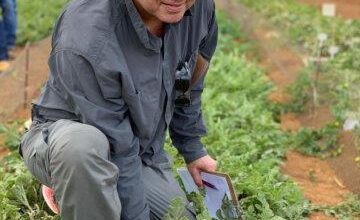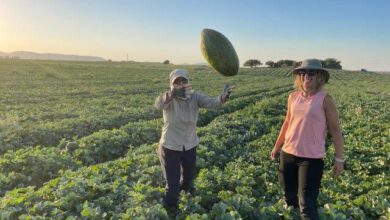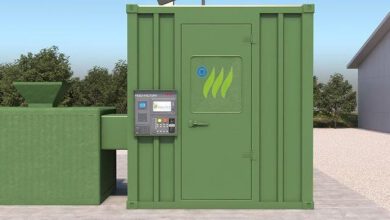How a Japanese engineer changed my salad
We can now deliver much higher light intensities to our plants with practically no limitation by heat dissipation and distance to canopy.
Elad Toby, Founder, CBDO & CTO, REMY
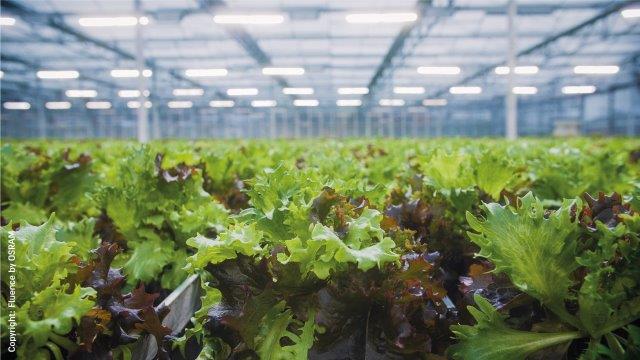

In the year 2014 three Japanese engineers, Shuji Nakamura, Isamu Akasaki and Hiroshi Amano were awarded the Nobel Prize for physics. They received the prize “for the invention of efficient blue Light-Emitting Diodes, which has enabled bright and energy-saving white light sources”.
The efficient blue LED went into commercial production in 1993, and so began a revolution in all light applications.
New capabilities of this electronic component were drastically better than before, so much so, that it was expected (and confirmed in reality) to reduce global energy consumption to a level where it was worthy of a Nobel prize.
While the whole lighting industry was exposed to a game changing development that shook the market, under the surface a totally different industry was about to experience a similarly significant effect by this invention. It would go as far as changing the very basic of agricultural food production possibilities, making room for original innovative thinking.
An agronomic lighting solution stands on three main pillars: Quantity (of photons), Qualities (of spectrum) and Photoperiod.
The option to use LED in agricultural applications brought unprecedented improvements in all three.
We can now deliver much higher light intensities to our plants with practically no limitation by heat dissipation and distance to canopy.
The spectrum can be designed at will and even changed during the growth cycle. Specific spectral manipulations can address secondary metabolic pathways and give unique attributes to our plants.
The LED electronic light fixture integrates seamlessly with advanced control systems. We can accurately dim and schedule lighting treatments to provide precise conditions for our plants. With LEDs we have much better control of photoperiod.
With such a disruption to a 140+ years old market comes an amazing opportunity together with some challenges. Knowledge to apply lighting, at the technically-possible level, was missing while a wide range of product design, specs and qualities entered the market. It was hard to choose the right fit for your application at first, but as the market advanced, knowledge was built and “best practices” were starting to appear. We still have a lot more to learn and it is obvious that current technologies can be used with much better control, efficiency and sophistication.
LEDs contribution to the development of complete indoor CEA (Controlled Environment Agriculture) is enormous. Light fixtures’ form factor, efficacy, spectral control and heat dissipation direction has opened the option to grow food anytime, anywhere.
Lighting is no longer a limiting factor in our growth protocol, it has evolved to be an enabling factor.
We can now get Photosynthesis On Demand (POD) and have the capabilities to someday reach photosynthetic independence, where we can grow enough food at will without dependence on natural conditions.
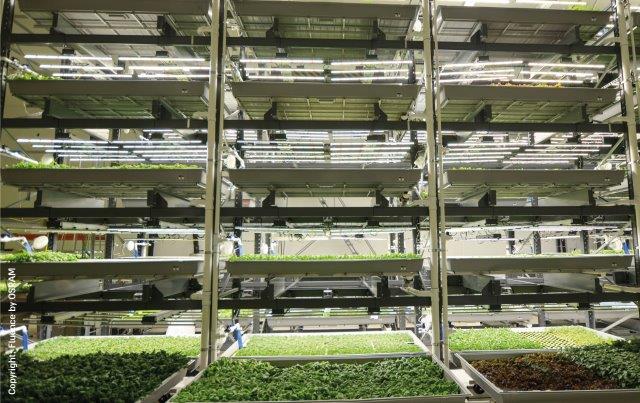
We are still only seeing the tip of the iceberg with the integration of high efficacy LED in agricultural applications.
There are commercial indoor CEA facilities all over the world, mostly growing leafy greens, micro greens and cannabis with a beginning of an indoor-grown market for strawberries, tomatoes and more crops are on the way. Yet I am not the one to say all food will eventually be grown indoors. I don’t think the coming global food crisis can be solved solely by indoor CEA farming. Looks like it will be solved by the accumulated capabilities of many innovative food production solutions, including printed hamburgers, fly larva and grasshopper based proteins. I do think indoor CEA farming will be a necessary addition to human-kind’s food production arsenal, especially if someday, down the line, we plan to inhabit other planets in and out of our solar system. Someday…
It was only a few days ago, during the COVID-19 lockdown that after hard negotiations we finally broke down and agreed to let our 5.5 year old son watch one last episode of “The magic school bus rides again” before going to bed. It turns out that specific episode (season 2 episode 3 by the way) was about precision agriculture and they actually had a vertical farm and vertical growing cylinders in a cartoon! I was blown away, and smiled as I realized the vision where it will be common for our children to eat vegetables grown in an urban area indoor CEA farm is being normalized and when it does eventually happen it will seem obvious to my son.
27 years ago, a group of Japanese engineers made a lighting component much better. I sometimes wonder if they thought their invention would make it possible to achieve photosynthetic independence and secure the human race’s food production capabilities.
LEDs are a revolution that gave birth to a second revolution. Electronics that went as far as changing the way we look at food production and expand its limits.
That’s how a Japanese engineer changed my salad.
© All Rights Reserved to REMY 108 LTD
www.remy.co.il | 09-8988302 | remy@remy.co.il | Moshav Yanuv, Israel

